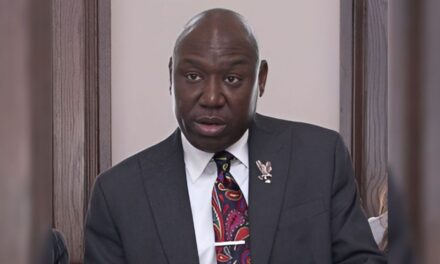By Alabama Daily News
Alabama’s sweeping expansion of school choice known as the CHOOSE Act is set to go into effect by the beginning of the 2025-2026 school year.
For choice advocates, the law is a signature victory in a long-awaited effort to offer parents more education options. But choice skeptics remain concerned about the law’s impact on the overall education system, particularly with funding.
An acronym for Creating Hope and Opportunity for Our Students’ Education, the CHOOSE Act will allow parents to put up to $7,000 in income tax credits toward tuition at a private school or up to $2,000 for homeschooling.
The program is initially funded to the tune of $100 million for its first year. For the first two years, eligibility is limited to students with special needs, students of active-duty service members, and students living in households with incomes not exceeding 300% of the federal poverty level of the preceding year, which in 2023, was $90,000 a year for a family of four.
Rep. Terri Collins, R-Decatur, is one of the Legislature’s leading education advocates. She’s confident that expanding options for students will benefit the education system.
“I think it’s going to promote education, I think it’ll help parents be involved in the decisions about education, and that would be at a school that they choose to go to, which could be staying at the public school they’re enrolled in,” Collins told ADN.
“I think giving families more choice about their education gets them more involved in the process, and that’s what we want.”
One of the chief concerns among the law’s critics is the removal of the income cap after the first two years. That will mean any family can access the tax credits no matter their in- come, including those already attending private schools.
“To divert these amounts of funds from the ETF, I think, is going to be just devastating to poor black, brown and white students; those are the ones that are going to hurt the most,” said Arthur Watts, chief financial officer for Montgomery Public Schools.
Speaking with Alabama Daily News on Tuesday, Watts said he feared that school systems like MPS, which is currently facing teacher layoffs due to a budget shortfall, could be stretched even thinner financially were dollars earmarked for public education to be diverted toward private school.
“The state Foundation fund is the largest source of revenue that school districts receive from the state, and I suspect that there will be money transferred from the ETF for public schools to private schools,” he told ADN.
“That certainly would affect Montgomery, and we would have to look at the possibility of cutting teachers, the possibility of cutting support such as our custodians, our maintenance department, secretaries and other support positions.”
With the most recent ETF budget passed by the Alabama Legislature being $9.3 billion, however, some doubt that the program’s initial annual cost of $100 million will have any measurable impact on public schools.
Among them is Ryan Cantrell, vice president of government affairs for the American Federation for Children, a national school choice advocacy group that strongly supported the CHOOSE Act as it made its way through the legislative process.
“When you look at the size of the ETF budget, over the course of the last decade, it has nearly doubled, which is an incredible amount of money,” Cantrell told ADN Tuesday
“At the same time, enrollment in public schools has stagnated at best, and so you’ve seen a doubling in the amount of money that’s going to public schools, while enrollment has largely stayed the same. So I think (the idea) that $100 mil- lion is going to bankrupt the nearly $10 billion ETF budget is a far cry from the truth.”
The ETF also supports community and four-year colleges.
How many students the program actually ends up expanding education options for, how- ever, remains another matter of debate.
A total of 28 states have enacted some form of school choice legislation, be it with education savings accounts, like the CHOOSE Act, or with school voucher programs.
Early data has shown, however, that the majority of school voucher or ESA recipients are families whose children are already enrolled in private school or other public school alternatives.
In Arizona, for instance, two weeks after the implementation of its own ESA program, the state’s Education Department reported that approximately 75% of all recipients had no prior record of public school enrollment in the state. In Florida, roughly 69% of the 122,000 new applicants to the state’s ESA program were already enrolled in private school.
Collins, when asked about this data, said that the CHOOSE Act included a number of provisions intentionally designed to boost the number of public school students participating in the program, as well as the aforementioned language related to temporary eligibility income caps.
“I think that we put some language in the bill to try to encourage those that are new users; some of them may be (already enrolled in private schools),” she told ADN.
“We also have salary caps so that (recipients) would be people that maybe have been struggling to keep their kids in a private school, and now this is going to be some help for them to do that, which was also the intent of that bill.”
Given the two-year expiration of the eligibility income cap, however, Watts argued that Alabama would fare similarly to other states with similar programs, calling them a “subsidy for wealthier families,” and expressed fears that private schools would eventually raise their tuition rates in response to the program.
“It’s basically a tax cut for those who may not even need it,” Watts said.
“You will have poor Black, Brown and White kids who probably will not be able to benefit from this particular bill because, probably in a couple years, I suspect that many of those private schools are probably going to raise tuition to keep out those same particular students that are not afforded to go to those schools anyway.”
Lower-income families may already struggle to make use of the program given that the average private school tuition in Alabama is currently around $8,238 a year, $1,238 more than the $7,000 currently allotted per eligible student.
While there exist private schools with tuition under $7,000, John Wilson, chief financial officer for Baldwin County Public Schools, also shares Watt’s concern that private schools may increase their tuition rates in response to the CHOOSE Act.
“When the federal government gave out subsidies for electric cars, what did the electric car manufacturers do when those subsidies came out?” Wilson told ADN.
“They increased the price of electric cars by the amount of the subsidy, so I think historically, whenever you have a program of this nature, which is really government intervention into private industry, what do they do? They raise tuition by the amount of the voucher.”
On whether or not private schools may increase their tuition, Cantrell said that inherent competitive nature of an education system more akin to a free market would largely prevent dramatic increases to tuition rates.
“Parents aren’t going to spend additional money at a school that is not serving their child’s needs; this is about giving parents the option of using their tax dollars to make sure that their child is getting the best education possible,” Cantrell said.
“At the end of the day, our job is to educate kids; it shouldn’t matter whether they’re going to a private, public or homeschool, it should just be whatever works best for that child, and our state will be better off for it.”
Even some of the CHOOSE Act’s critics hold that some of the bill’s components were positive. Wilson, for instance, praised the bill’s prioritization of special needs students.
“I have no issue with how students that can participate must meet a certain income level, I have no issue with gearing that towards special needs, I do think there are private institutions that can offer a higher level of service than sometimes public can,” Wilson said.











